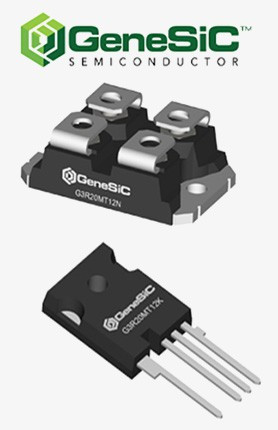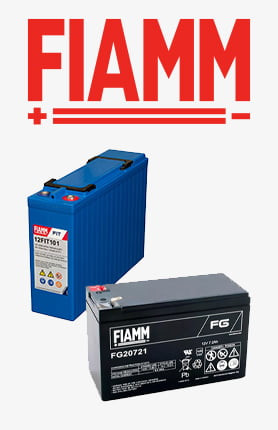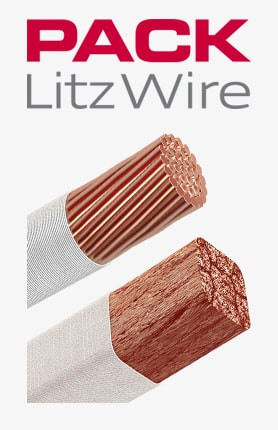-
BackX
-
Components
-
-
Category
-
Semiconductors
- Diodes
- Thyristors
-
Electro-insulated Modules
- Electro-insulated Modules | VISHAY (IR)
- Electro-insulated Modules | INFINEON (EUPEC)
- Electro-insulated Modules | Semikron
- Electro-insulated Modules | POWEREX
- Electro-insulated Modules | IXYS
- Electro-insulated Modules | POSEICO
- Electro-insulated Modules | ABB
- Electro-insulated Modules | TECHSEM
- Go to the subcategory
- Bridge Rectifiers
-
Transistors
- Transistors | GeneSiC
- SiC MOSFET Modules | Mitsubishi
- SiC MOSFET Modules | STARPOWER
- Module SiC MOSFET ABB’s
- IGBT Modules | MITSUBISHI
- Transistor Modules | MITSUBISHI
- MOSFET Modules | MITSUBISHI
- Transistor Modules | ABB
- IGBT Modules | POWEREX
- IGBT Modules | INFINEON (EUPEC)
- Silicon Carbide (SiC) semiconductor elements
- Go to the subcategory
- Gate Drivers
- Power Blocks
- Go to the subcategory
- Electrical Transducers
-
Passive components (capacitors, resistors, fuses, filters)
- Resistors
-
Fuses
- Miniature Fuses for electronic circuits - ABC & AGC Series
- Tubular Fast-acting Fuses
- Time-delay Fuse Links with GL/GG & AM characteristics
- Ultrafast Fuse Links
- Fast-acting Fuses (British & American standard)
- Fast-acting Fuses (European standard)
- Traction Fuses
- High-voltage Fuse Links
- Go to the subcategory
- Capacitors
- EMI Filters
- Supercapacitors
- Power surge protection
- TEMPEST emission revealing filters
- Surge arrester
- Go to the subcategory
-
Relays and Contactors
- Relays and Contactors - Theory
- 3-Phase AC Semiconductor Relays
- DC Semiconductor Relays
- Controllers, Control Systems and Accessories
- Soft Starters and Reversible Relays
- Electromechanical Relays
- Contactors
- Rotary Switches
-
Single-Phase AC Semiconductor Relays
- AC ONE PHASE RELAYS 1 series| D2425 | D2450
- One phase semiconductor AC relays CWA and CWD series
- One phase semiconductor AC relays CMRA and CMRD series
- One phase semiconductor AC relays - PS series
- Double and quadruple semiconductor AC relays - D24 D, TD24 Q, H12D48 D series
- One phase semiconductor relays - gn series
- Ckr series single phase solid state relays
- One phase AC semiconductor relays for DIN bus - ERDA I ERAA series
- 150A AC single phase relays
- Rail Mountable Solid State Relays With Integrated Heat Sink - ENDA, ERDA1 / ERAA1 series
- Go to the subcategory
- Single-Phase AC Semiconductor Relays for PCBs
- Interface Relays
- Go to the subcategory
- Cores and Other Inductive Components
- Heatsinks, Varistors, Thermal Protection
- Fans
- Air Conditioning, Accessories for Electrical Cabinets, Coolers
-
Batteries, Chargers, Buffer Power Supplies and Inverters
- Batteries, Chargers - Theoretical Description
- Modular Li-ion Battery Building Blocks, Custom Batteries, BMS
- Batteries
- Battery Chargers and Accessories
- Uninterruptible Power Supply and Buffer Power Supplies
- Inverters and Photovoltaic Equipments
- Energy storage
- Fuel cells
- Lithium-ion batteries
- Go to the subcategory
-
Automatics
- Spiralift Lifts
- Futaba Drone Parts
- Limit Switches, Microswitches
- Sensors, Transducers
-
Infrared Thermometers (Pyrometers)
- IR-TE Series - Water-proof Palm-sized Radiation Thermometer
- IR-TA Series - Handheld Type Radiation Thermometer
- IR-H Series - Handheld Type Radiation Thermometer
- IR-BA Series - High-speed Compact Radiation Thermometer
- IR-FA Series - Fiber Optic Radiation Thermometer
- IR-BZ Series - Compact Infrared Thermometers
- Go to the subcategory
- Counters, Time Relays, Panel Meters
- Industrial Protection Devices
- Light and Sound Signalling
- Thermographic Camera
- LED Displays
- Control Equipments
- Go to the subcategory
-
Cables, Litz wires, Conduits, Flexible connections
- Wires
- Cable feedthroughs and couplers
- Litz wires
- Cables for extreme applications
- Sleevings
-
Braids
- Flat Braids
- Round Braids
- Very Flexible Flat Braids
- Very Flexible Round Braids
- Cylindrical Cooper Braids
- Cylindrical Cooper Braids and Sleevings
- Flexible Earthing Connections
- PCV Insulated Copper Braids (temp. up to 85C)
- Flat Aluminium Braids
- Junction Set - Braids and Tubes
- Steel Braids
- Go to the subcategory
- Traction Equipment
- Cable Terminals
- Flexible Insulated Busbars
- Flexible Multilayer Busbars
- Cable Duct Systems
- Go to the subcategory
- View all categories
-
Semiconductors
-
-
- Suppliers
-
Applications
- CNC Machine Tools
- DC and AC Drives (Inverters)
- Energetics
- Energy bank
- Equipment and Components for Hazardous Areas [Ex]
- Equipment for Distribution, Control and Telecommunications Cabinets
- HVAC Automation
- Induction Heating
- Industrial Automation
- Industrial Protective Devices
- Machines for Drying and Wood Processing
- Machines for Thermoforming Plastics
- Mining, Metallurgy and Foundry
- Motors and Transformers
- Power Supplies (UPS) and Rectifier Systems
- Printing
- Temperature Measurement and Regulation
- Test and Laboratory Measurements
- Tram and Railway Traction
- Welding Machines
-
Assembly
-
-
Inductors
-
-
Induction devices
-
-
Service
-
- Contact
- Zobacz wszystkie kategorie
Enclosures
At Dacpol, we offer various specialized solutions and products in the category of components for explosion hazardous areas (EX). We supply Ex enclosures and systems from renowned manufacturers, including Schneider Electric and Quintex.
Our solutions for Ex zones hold many required...
At Dacpol, we offer various specialized solutions and products in the category of components for explosion hazardous areas...
| Image | View the product | No. Manufacturer | ||||
|---|---|---|---|---|---|---|
| picture_as_pdf |
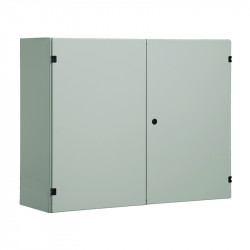
|
Quintex | EX_P QUINGUARD® pressure system | SEE IT | -- | On Order |
| picture_as_pdf |
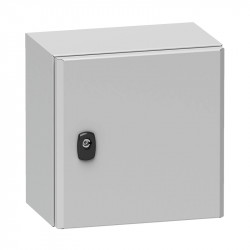
|
Schneider Electric | Empty cabinet made of stainless steel S3DEX series | SEE IT | -- | On Order |
At Dacpol, we offer various specialized solutions and products in the category of components for explosion hazardous areas (EX). We supply Ex enclosures and systems from renowned manufacturers, including Schneider Electric and Quintex.
Our solutions for Ex zones hold many required certifications, such as ATEX, and comply with standards EN 60079-0:2012, EN 60079-7:2007, and EN 60079-31:2009.
Our offer includes:
- Empty Schneider Electric enclosures from the S3DEX series – for applications requiring high resistance to external and mechanical factors.
- Ex P pressure systems QUINTEX Quinguard – protection level: IP 65; operating temperature: -20°C to +60°C; for mounting sparking components in explosion hazardous zones 1 or 2.
What are Ex zones?
Ex zones are areas with explosion hazards – where substances mixed with an oxidizing gas like air, when ignited, can cause the combustion process to spread through the entire mixture. Example ignition sources include: electrical sparks, mechanically generated sparks, electrostatic sparks, or hot air.
There are several types of protection: Ex D – flameproof and explosion-proof; Ex P – pressurized; Ex O – oil immersion protection; Ex E – increased safety enclosures to prevent potential sparking; Ex i – intrinsically safe enclosures; Ex M – encapsulated protection with resin.
Dacpol offers products designed for operation in varied environments, where explosive atmospheres may be present in zones 0, 1, or 2 for gases, and 20, 21, or 22 for dusts. We provide expert assistance in selecting appropriate products and professional technical advice to find the best solutions. Upon customer request, we strive to tailor our offer and adapt products to the type of facility or working conditions.
What are the types of EX zones?
An EX zone is an area that can be divided into two categories based on factors that could lead to an explosion. The first type refers to places where the presence of gases, vapors, mists, or other volatile substances may pose a risk. These are divided into three zones – 0, 1, and 2.
Zone 0, the most hazardous, refers to areas where an explosive atmosphere is present continuously or for long periods. An example would be the inside of tankers.
EX Zone 1 relates to places where an explosive atmosphere may occasionally occur under normal operating conditions. These areas are not as dangerous as Zone 0 but still pose serious risks to machinery and human health and safety.
EX Zone 2 is an area where an explosion hazard does not occur under normal working conditions but may appear occasionally and briefly, e.g., during installation or equipment failure.
A similar, second classification applies to dust. These zones are labeled 20, 21, and 22. Zone EX 20 refers to the most explosion-prone areas, while 22 is the least.
What protective measures are used in EX zones to eliminate hazards?
Explosion protection in EX zones, regardless of the level of hazard, primarily involves preventing the formation of an explosive atmosphere. To achieve this, ventilation solutions are used to ensure the proper oxygen-to-hazardous-substance ratio.
However, achieving a sufficient level of air concentration is not always possible. Therefore, another crucial element used in EX zones includes components and equipment that eliminate ignition sources.
EX zones — classification of equipment intended for them
Devices that can be installed in EX zones include not only electronic equipment but also accessories for their installation. Examples include EX enclosures. The zone in which they can be used depends on their protective features, which ensure safe operation in explosion hazardous areas.
Depending on the EX zone classification, enclosures fall into the following categories:
1, which includes devices and components offering a very high level of explosion protection, permitted for installation in all zones,
2, which includes devices and components offering a high level of explosion protection, permitted for installation in zones 1 and 2,
3, which includes devices and components offering a standard level of explosion protection, permitted for installation in zone 2.
These categories apply to components designed for use in explosion hazardous zones of Group I – used in mining industries, and Group II – intended for all EX zones not related to mining industries.
What explosion-protective solutions can EX enclosures be equipped with?
EX enclosures intended for use in explosion hazardous areas are mostly made of steel or aluminum. They are also equipped with specialized construction solutions. One example includes flameproof EX enclosures, which are designed in such a way that in the event of an internal fire, the flames cannot escape and ignite the explosive atmosphere outside. Zones 1 and 2 are the most common application areas for these EX components.
Another variant is reinforced EX enclosures. They feature a design resistant to mechanical damage and may be equipped with anti-sparking solutions.
EX zone and key parameters for component selection
Components such as EX enclosures must be selected for explosion hazardous zones with consideration for several critical parameters that influence their effectiveness in preventing potentially dangerous situations. Besides adapting them to the zone type, it is essential to consider:
- type of protection such as Ex d, Ex e, or Ex i, which should match the requirements of the specific EX zone,
- temperature class, indicating the maximum surface temperature – it must be lower than the ignition temperature of substances in the EX zone,
- IP protection class, indicating the level of protection against external factors such as moisture or dust.
Moreover, EX enclosures must be designed and manufactured in accordance with the ATEX Product Directive 2014/34/EU.
At DACPOL, we offer products intended for use in explosion hazardous zones available in various versions in terms of dimensions and parameters. This allows appropriate solutions to be selected for each EX zone, regardless of the industry and its specifics.

